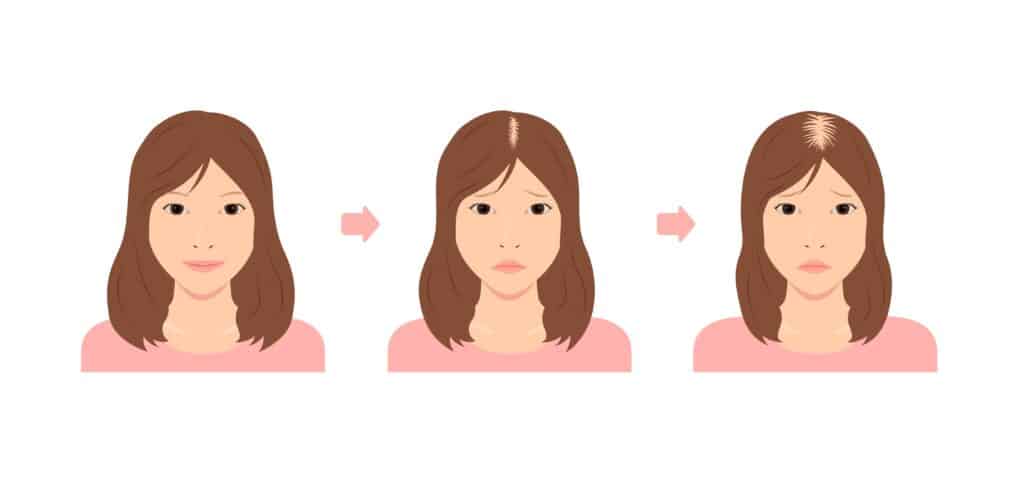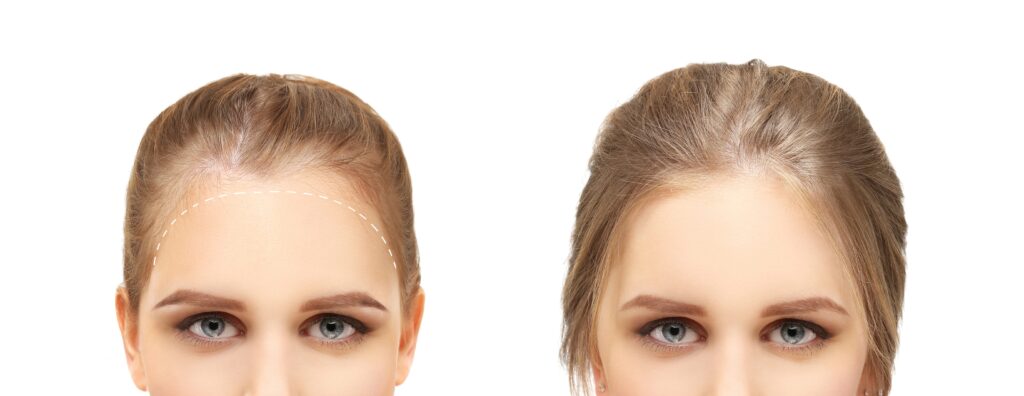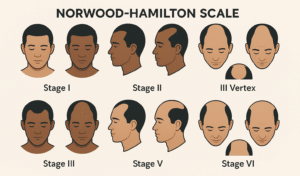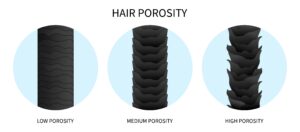What Is the Ludwig Scale?
The Ludwig scale is a scale hair loss specialists use to classify female pattern baldness, thereby determining how severe the condition is, as well as the most suitable treatment method. The scale was first proposed in 1977. Since its approval, it has gained widespread acceptance as the ideal method for measuring the progression of female hair loss.
Female androgenetic alopecia is the major cause of hair loss in women and is difficult to diagnose. This scale helps make it easier, so patients can know where they stand by comparing their symptoms to those described in the scale. The scale divides into stages, each representing a higher degree of hair loss than the previous one.
What Are the Different Stages of the Ludwig Scale?

Stage 1
Patients usually cannot detect stage 1 female hair loss because it doesn’t affect the hair’s overall thickness. At this stage, hair thinning occurs, but it’s mainly along the middle of the head where hair parting takes place. It doesn’t affect other parts of the head. Over time, stage 1 female alopecia becomes more obvious because the scalp starts to show whenever you part the hair.
Stage 2
By stage 2, when parting the hair, patients notice that the scalp becomes much more visible. They also observe pronounced thinning along the center. Whenever you part your hair, you will notice that the gap appears wide, alongside a decrease in the overall volume of hair on your head. At this stage, women are advised to go for a hair transplant to prevent the condition from worsening.
Stage 3
This is the final stage on the Ludwig. At this stage, the scalp is fully visible, and the top of the head may be completely bald. The density at the sides and back of the head may also reduce noticeably, as thinning is now widespread across the entire head. However, in many cases, the front hairline remains unaffected. Without intervention at this stage, a woman may be at risk of developing baldness.
How does the Ludwig Scale diagnose female pattern hair loss?
Female pattern hair loss progresses similarly for all women, and the Ludwig scale adequately describes this progression. To diagnose female pattern hair loss, you examine the scalp to see which stage of the Ludwig best describes your hair loss condition at that point in time. Over time, if the condition progresses from one stage to another, you can be sure you have female pattern hair loss.
However, for accuracy, it is better not to self-diagnose but rather to get a hair specialist to diagnose you. Plus, this way, you can get professional recommendations on a treatment method.
What Are the Treatments for Female Pattern Hair Loss?

The type of female pattern hair loss treatment you receive will largely depend on your stage on the Ludwig scale. Here are the top three treatments:
1. Medication
This type of treatment best suits stage 1 female hair loss patients and those experiencing early onset of stage 2. Here, the patient applies medication to the scalp to help the hair follicles grow thick and prevent more hair from falling.
Minoxidil is one of the most commonly used products for this purpose. However, results vary from person to person, and some individuals have reported side effects such as changes in hair color.
2. Platelet-Rich Plasma (PRP) Therapy
This treatment is another effective way to stop female pattern hair loss from progressing. In this method, healthcare professionals extract nutrient-rich plasma from the bloodstream and inject it directly into the hair follicles, promoting improved hair growth and strength.
3. Hair Transplant
This treatment provides the best result for any identified female hair loss patient, regardless of her stage on the Ludwig. However, it is advisable to opt for a hair transplant in Turkey at stage 2 when the donor sites are still full and thick.
The type of hair transplant method used will be determined by the surgeon, though most surgeons opt for the FUE hair transplant technique.




